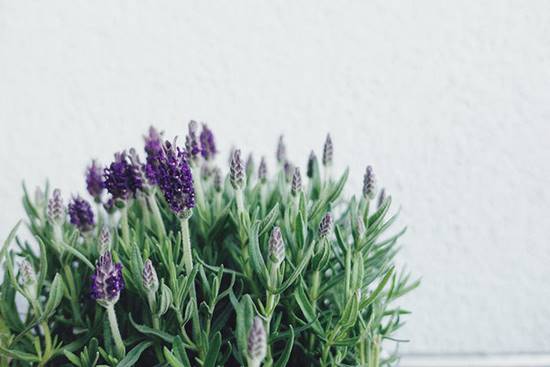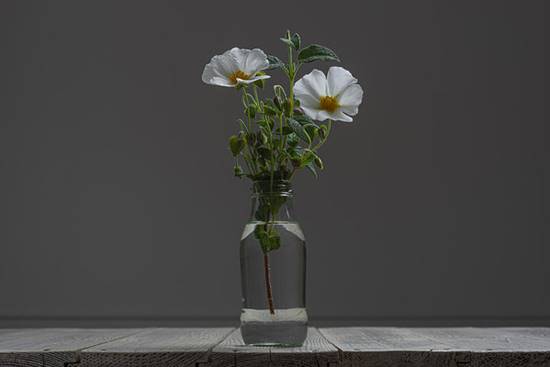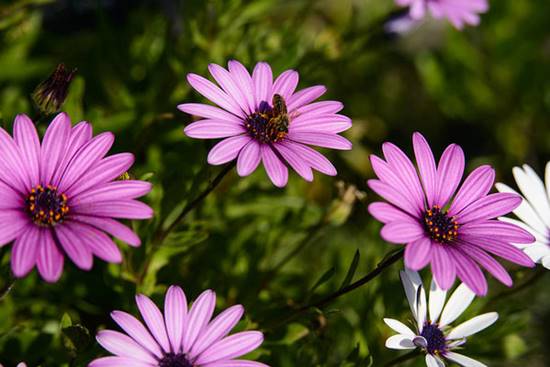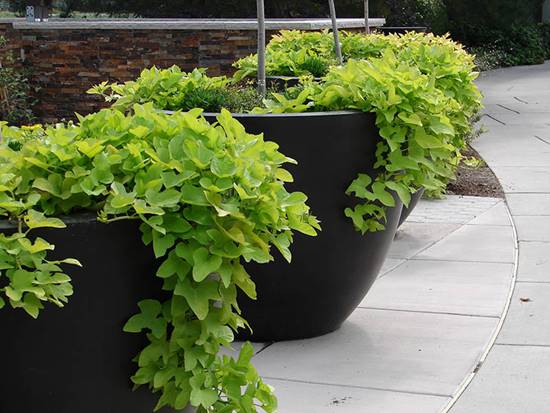35 Most Drought Tolerant Plants | Plants That Grow in Lack of Water
Don’t let water scarcity stop you from gardening by planting these drought-tolerant plants. Even without scarcity of water, you shouldn’t shy away from the opportunity to save water!
Planting in the dry regions is tough especially when you face water scarcity in your region. We have put together a list of some of the most Drought-tolerant plants that’ll keep your love for gardening alive even in adverse conditions. These hardy drought-tolerant plants can survive prolonged spells of dry and drought and will save tons of water!
1. Bougainvillea
Botanical Name: Bougainvillea

A versatile, colorful plant that comes in all the forms ornamental, vine, and bush. The showy feature is not the waxy flower but the colorful sepal-like bract surrounding it. Papery textured bracts are stunning and range from white, pink, orange, purple, to burgundy. Bougainvilleas are the most drought-tolerant plants and easy to care for too!
2. Lavender
Botanical term: Lavendula

Lavender blooms throughout the year and has bluish or purple stunning spikes that are the reason behind its cool name. Flowering is at its peak in the springs and benefits tremendously from deadheading. Upright flower spikes bear fragrant lavender, deep blue-purple, light pink, and white flowers. Ideal for the herb garden and hedges and can tolerate blazing hot sun and dry soil!
3. Verbena
Botanical Name: Verbena
USDA Zone: 3-11

Foliage comprises of opposite growing leaves with varying degrees of hairs on the surface, depending on the species. Densely packed spikes of flowers come in many shades of dazzling blue with some white, pink, or purple. They can tolerate even the hottest summer days and dry soil. Promote flowering by trimming the plant to one-fourth, and you’ll notice flowering in a few weeks.
4. Rock Soapwort
Botanical Name: Saponaria ocymoides

This low creeping plant can grow from 1-3 feet in height and is an excellent ground cover. Want to know an interesting fact about the plant? You can use it to make soap and hence the name Soapwort. Midsummer to fall is the time when it presents charming clusters of blooms ranging from pale pink to white. Plant it in empty beds, woodland edges, rock gardens, or let it spill out from sunny slopes or over rock walls.
5. Agave
Botanical Name: Agave

Rosette of large fleshy leaves is the distinct feature of agaves. Agaves are succulent, so they require less water. Native to hot and arid regions of America, they are not new to drought and dry conditions. Most agaves have a sharp terminal spine and small marginal spines. Commercially blue agave is used to produce tequila, a popular alcoholic beverage.
6. Palms
Botanical Name: Arecaceae

Bring that tropical feel to your home and garden with the palms! There are numerous varieties from which you can choose the one that suits your needs. If you have a scarcity of space, go for dwarf palms as they don’t take up much space. The good thing about date palms is that once established; they can tolerate prolonged periods of drought.
7. Angel’s Fishing Rods
Botanical Name: Dierama pulcherrimum

The attractive feature is the arching stems that appear to be nodding and adorned with bell-shaped flowers. You can expect the blooms from early to late summer, ranging from pink, magenta to white. Grass-like foliage further enhances its beauty and makes it dance to the flow of the wind.
8. Sea Holly
Botanical Name: Eryngium

Sea holly stands apart from other plants due to the distinctive purplish-blue flowers. The striking color of the flowers is due to the bracts that surround a green or blue cone present at the center. It offers different shaped leaves such as lobed, long, and even round for different varieties. Give it a corner or sidewalk, and it won’t disappoint you.
9. Mediterranean Spurge
Botanical Name: Euphorbia characias

When other flowers die in the late winters, it stands against the cold and stark surroundings. The main stem is surrounded by bluish-green foliage spirally, giving it a bottle brush type appearance. Well adapted to dry and gritty soil as its origin from the Mediterranean region. Yellow flowers grow in massive clusters and sports chartreuse flower bracts. Watch out for the sap as it can irritate the skin.
10. Striped-stemmed Aloe
Botanical Name: Aloe striatula

Also known as the hardy aloe, it’s probably the toughest and among the most drought tolerant plants you’ll come across. Bright yellow flowers on the upright flower spikes tower above the plant and are pendulous. Flowers growing clusters and cover up the top half of the spike, making it visible from far. Striped leaves and stems in shades of green and dark green make it an exciting addition to any space.
11. Wallflower
Botanical Name: Erysimum

They are known for the beautiful colors and sweet aroma. The wallflowers are short-lived perennials in warmer regions (USDA Zones 8-10); others are annuals (in colder areas) or biennials that resist drought well and require occasional watering. Flowers appear in spring and summer in clusters. Put your wallflower plant in a sunny or partially shaded place and remember not to water it much.
12. Lantana
Botanical Name: Lantana camara
USDA Zones: 7 to 11

If you wish for flowers that remain in an extended bloom period, lantana is the best choice. They can be both annuals and perennials, depending on the weather with blooms all year round in warm regions. Grow them in the yard, porch, or containers and even in hanging baskets if it’s a trailing variety. It’s one of the most heat and drought tolerant plants!
13. Jerusalem Sage
Botanical Name: Phlomis

Although fuzzy foliage of Jerusalem sage greyish-green and textured add interest, it’s the flowers that are a delight. Bright yellow flowers are arranged spirally on a vertical stalk, and one resides on the top of another, giving it a structural beauty. Be it a herb garden, vegetable garden, or raised planters; it’s a go-to plant. Furthermore, it attracts butterflies and hummingbirds.
14. Bugle Lily
Botanical Name: Watsonia

When a plant is related to the lily family, you know it’s going to be striking. Watsonia bulb or bugle lily plants have artistic sword-shaped leaves and eye-catchy flowers. Towering to a foot above the foliage, the flowers come in shades of orange, pink, scarlet, and peach. Flowering in mid-summer, they make up for a glorious cut-flower.
15. Moss Rose
Botanical Name: Portulaca grandiflora

Another flowering plant in the list that also goes by the name sun rose and Portulaca. One of the hardest when it comes to heat and drought-tolerant plants. As they self seed and spread quickly, most gardeners prefer them a ground cover. You can also grow them in a container where they’ll look beautiful, sprawling over the rim. They also grow well in cracks and crevices and perfect for revamping old structures and walkways.
16. Rockrose
Botanical Name: Cistus

Originating from the dry and rocky soil of the Mediterranean, this evergreen shrub has medicinal properties, particularly the flowers. Derivatives of its flowers have a calming effect and work well against anxiety, panic, and stress. From spring to summers it flowers profusely, and the flowers range from pink, rose, yellow, orange, to white. It’s resistant to heat, drought, and salt spray and thrives on neglect. They do well as cut flowers!
17. Oleander
Botanical Name: Nerium oleander

This brilliant large shrub can tolerate heat, drought, high-speed winds, and even salt sprays of coastal areas. Blooming throughout the summer and springs, its fragrant blooms come in hues of red, white, yellow, purple, peach, salmon, and pink. Beware as its a highly toxic plant and can turn fatal if ingested, so keep it out f the reach of pets and infants.
18. Cape Daisy/ Marguerite
Botanical Name: Dimorphotheca ecklonis

Also known as daisy bushes and African daisies, they are a member of the daisy family. Similar to daises, the petals surround the center disk, and yet it possesses an alien beauty to it. Center disk appears to have a metallic paint and petals a realistic shade. Plant it as a ground cover, in raised beds, or even in pathways and lawn. One of the most beautiful drought-tolerant plants in the list.
19. Wormwood
Botanical Name: Artemisia absinthium

It’s a herb that possesses medicinal properties with a pleasant fragrance. Beds, borders, herb gardens, and rock gardens are ideal for planting this woody perennial. Its silver-gray leaves contrast well with other dark leafed plants. Make sure its planted in well-draining soil. Other varieties of Artemesia also come under drought-tolerant plants.
20. Artichoke
Botanical name: Cynara scolymus

Artichoke belongs to the same family to which thistles, dandelions, and sunflowers belong, which is Asteraceae. In cool regions, grow them as annuals, whereas in warm regions, they are short-lived perennials. The tender and flavorful flower buds are used in various dishes. Reaching a height of 3-6 feet, its woody stems and long arched silver-green leaves are notable.
21. Fountain Grass
Botanical name: Pennisetum setaceum

As the name suggests, the grass forms a fountain-like shape with foliage emerging from the center and spreading out in all directions. As the grass grows in clumps, its suitable for the backyard as isn’t invasive. Foliage ranges from green to purple with feather-like flowers on the top. Enjoy as the cascading foliage and feather-like flowers sway to the slightest breeze.
22. Beard Tongue
Botanical name: Penstemon

It’s a hardy herbaceous plant that belongs to mountains and its foothills and commonly found in western America. Bell-shaped flowers grow in the brilliant shades of rose, lilac, bright red, peach, rose, lilac, purple, white, and salmon. Butterflies, hummingbirds, and bees enjoy the nectar of the flower.
23. Kangaroo Paw
Botanical name: Anigozanthos manglesii

This evergreen rhizomatous perennial also goes by names red-and-green kangaroo paw, Mangle’s kangaroo paw, Kurulbrang and is the flower emblem of Western Australia. Hairy red stem sports bunch of narrow leaves at the bottom and flowers are growing out from the top. Racemes of simple and branched flowers are tubular, hairy, and hooded.
24. Geranium
Botanical name: Pelargonium

Relish them in the hanging baskets in both indoors and outdoor space or simply as a bedding plant in the garden. They do really well on windowsills! Its a no-fuss plant and once establishes doesn’t require much care including watering. Blooms can be white, pink, and red and spread their intoxicating fragrance in the surroundings. They last for decades but make sure to overwinter them indoors in the cold regions.
25. New Zealand Tea Tree
Botanical name: Leptospermum scoparium

Leaves of this evergreen shrub produce aroma when crushed and are needle-like, small, and prickly. Blooms are small and attractive and range from pink, red, to flamboyant white. Pollinators such and bees and butterflies are attracted to the blooms. The essential oil extracted from leaves and medicinal use of bark adds value to it.
26. Trumpet Vine
Botanical name: Campsis radicans

Trumpet vine or trumpet creeper is a perennial vine that grows fast. Hummingbirds find the trumpet flowers which are tubular and range from yellow, orange, or red particularly attractive. Flowers are followed by bean-shaped seed pods later in the fall. If allowed, it grows to a whooping length of 30-40 feet, which requires frequent pruning to keep in control.
27. Sticks on Fire
Botanical name: Euphorbia tirucalli

This evergreen succulent shrub is a show-stealer due to the striking show of colors. The thin pencil-like stems branch out as they grow and attain red, yellow, and orange hues when exposed to the sun. Handle carefully as the milky-white sap of the stems can irritate the skin. A perfect addition to the Waterwise garden for vertical accents, landscapes, fierce colors, and containers for displays. When it comes to drought-tolerant plants it’s the most exciting one!
28. Wild Lilac
Botanical name: Ceanothus

Wild lilac is gardener’s favorite as it’s versatile, and you can use it anywhere from hedges, groundcover, shrub borders, to even sidewalks. Commonly known as California lilacs, it’s flowering display is both colorful and fragrant. Flowers range from white to various shades of blue, and purple, offering a lot of variety. It requires little water and, once established, can last 10-25 years.
29. Palo Verde
Botanical name: Cercidium

It belongs to a brilliant architectural family that includes around 12 species of pea family trees. Commonly found in the arid regions, these trees are well adapted to drought-like conditions. In fact, due to the ability to handle heat and drought, they are ideal for desert landscaping. Intricate branches give it a structural beauty with clusters of bright yellow flowers further enhancing it.
30. Sweet Potato Vine
Botanical name: Ipomea batatas

Vibrant colors of the foliage attract onlookers and are the selling point for sweet potato vine. Grow them as a groundcover vine as they spread quickly via runners or train them on a trellis or pole if you prefer a vine. It also has edible tuberous roots that have a bland taste but are rich in vitamins, minerals, antioxidants, and fiber. Deers are its nemesis! Get more info about this plant here.
31. Pride of Madeira
Botanical name: Echium candicans

Native to the island of Madeira, this herbaceous perennial sub-shrub can attain a height of 4-8 feet. Bluish purple flower spikes with a large flower head draw attention even from far. In its natural habitat, it grows of rocky cliffs, hillsides, and slopes and, once establishes, requires little to no irrigation. The sap can irritate the skin, and the flowers attract pollinators such as bees.
32. Living Stones
Botanical name: Lithops

If there is one bizarre succulent that never fails to impress its the lithops. The stone-like appearance of the plant is the reason behind its unique common names, such as living stone and pebble plant. It’s a slow grower with minimal watering needs. Perfect accent piece for the small spaces such as in the home and office.
33. Blanket Flower
Botanical Name: Gaillardia
USDA Zone: 3-10

The rich colors of the daisy-like flowers of this short-lived perennial never fail to impress. Easy to grow even for novice gardeners as it doesn’t require much care. They spread slowly and cover the ground as they are self-seeding, and that’s why called blanket flower. In the initial period, you’ll need to keep the soil moist but once established its drought tolerant.
34. Sage
Botanical Name: Salvia officinalis

Sage is a culinary herb that’s used for flavoring various dishes, including meat dishes and bean dishes. This hardy perennial can tolerate both dry and drought and is a perfect fit for both vegetable and herb garden. In the springs, flowers grow on the spikes ranging from purple, blue, white, to pink. Keep in mind that no all varieties are edible!
35. Stonecrops
Botanical Name: Sedum

This flowering genus contains around 600 species of blooming plants, commonly referred to as stonecrops. Succulent leaves and stems characterize this plant and can hold water. As the leaves and stems can hold water, it can undergo prolonged periods of drought. Clusters of brilliant star-shaped flowers scream attention.





